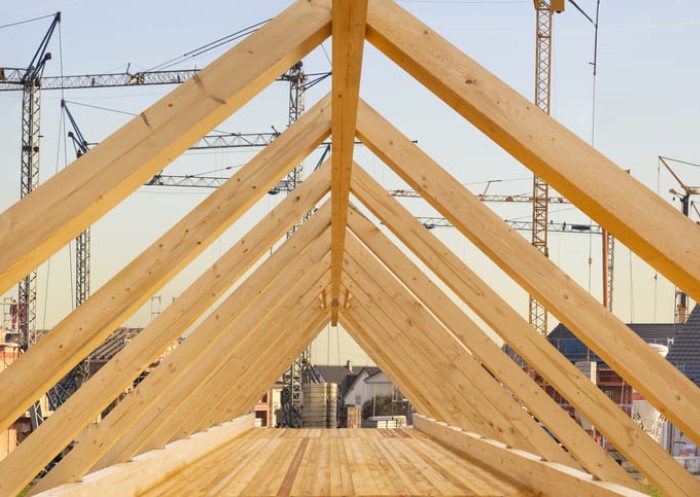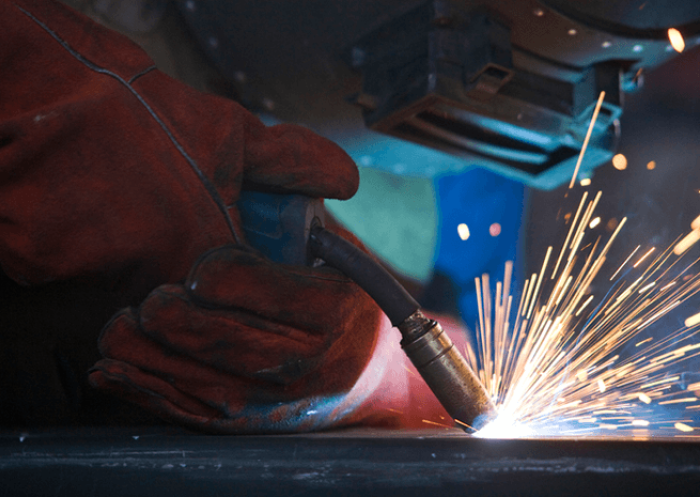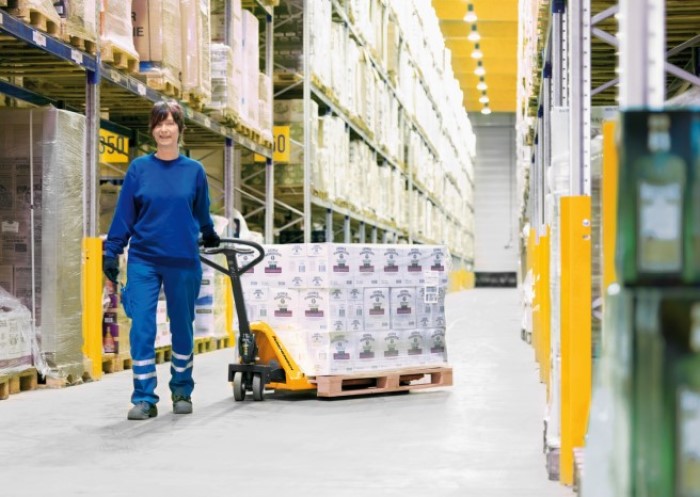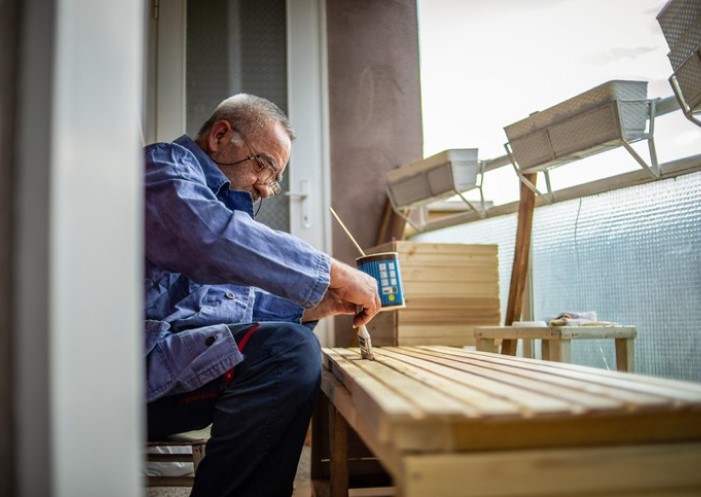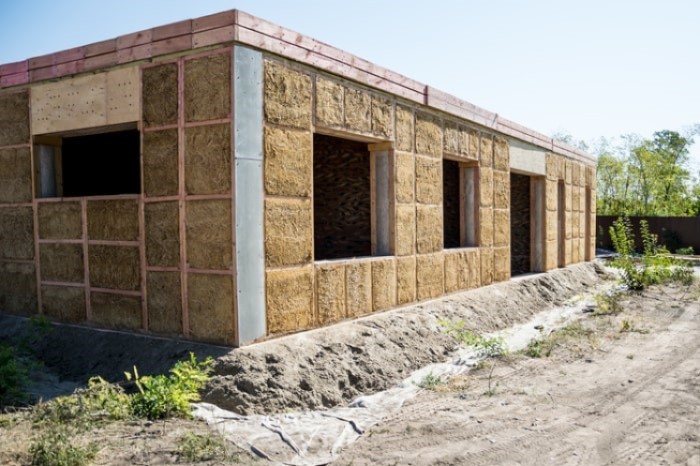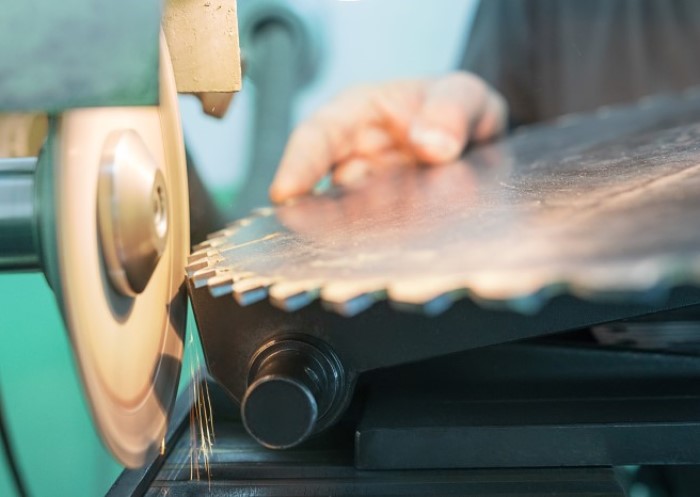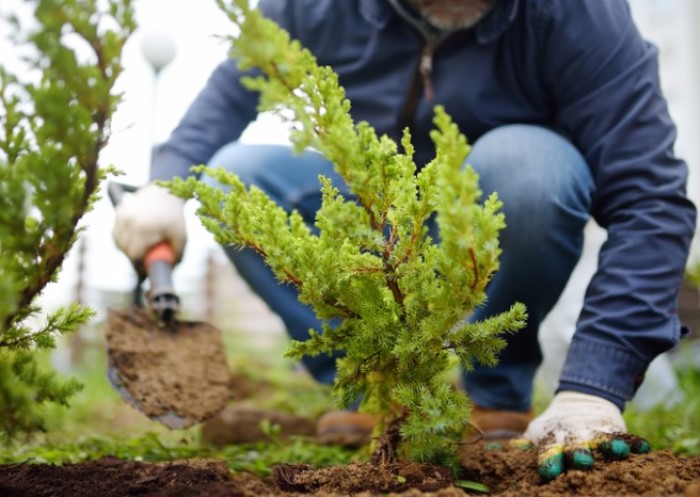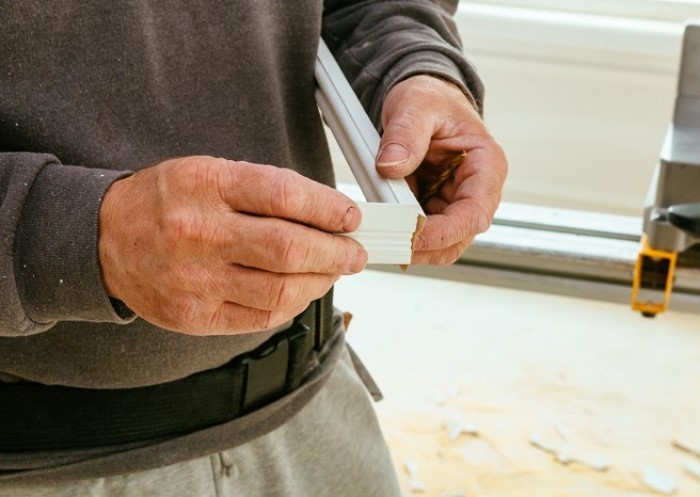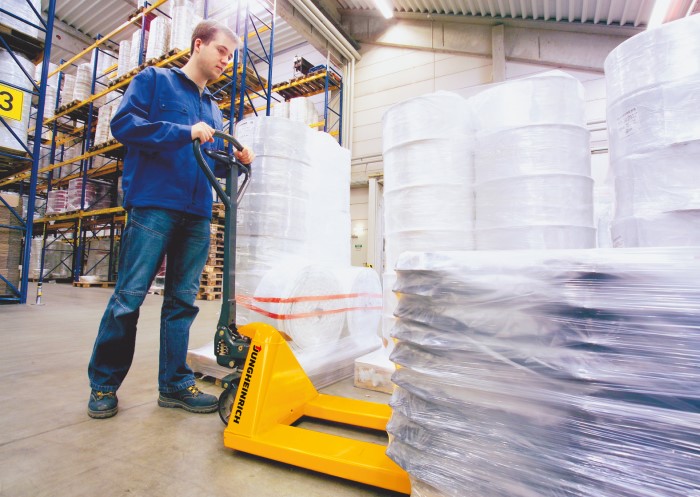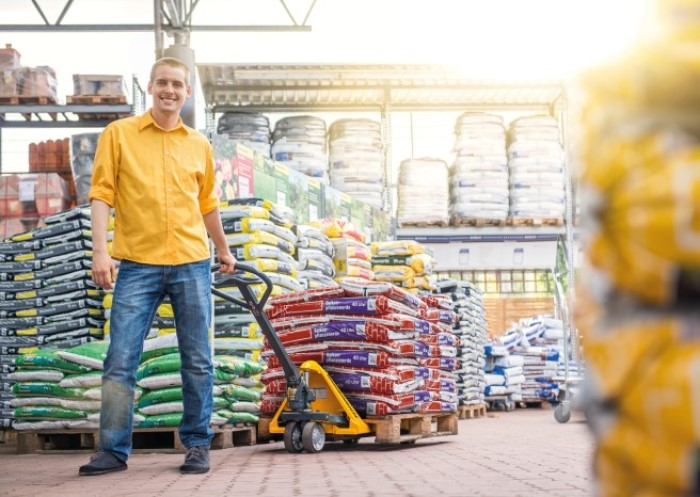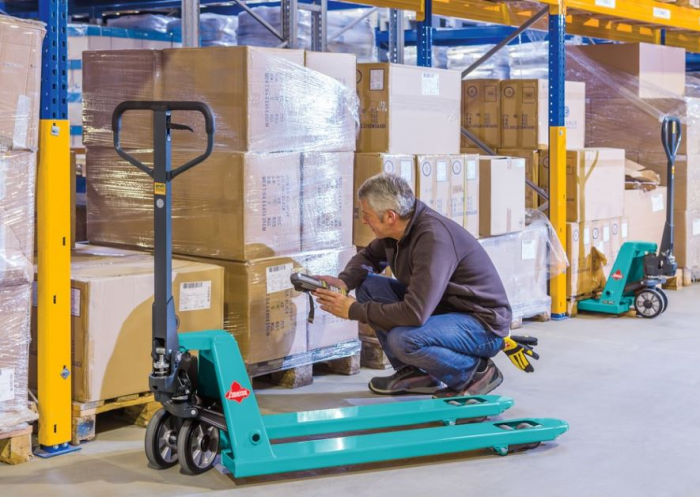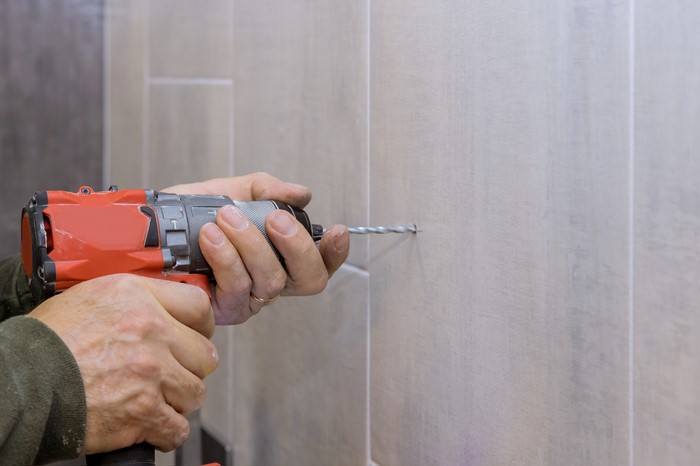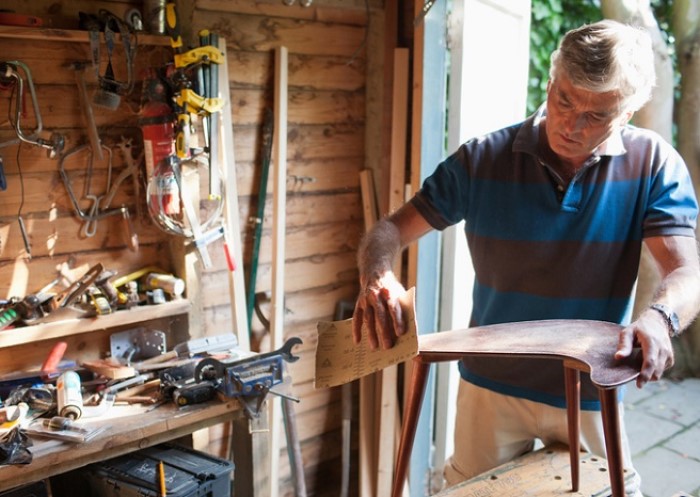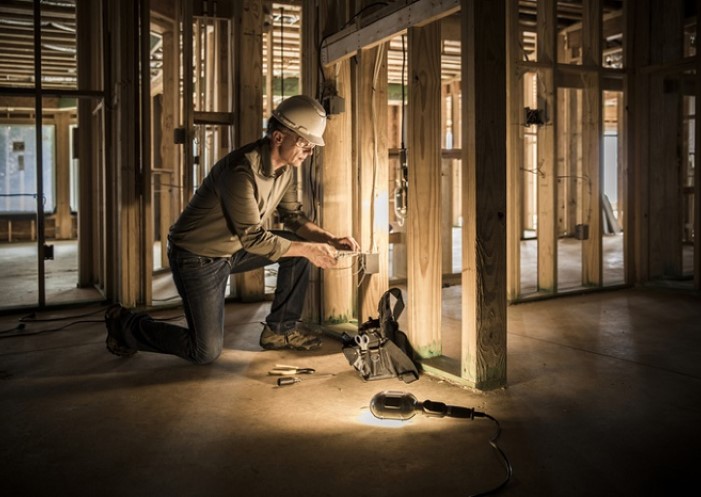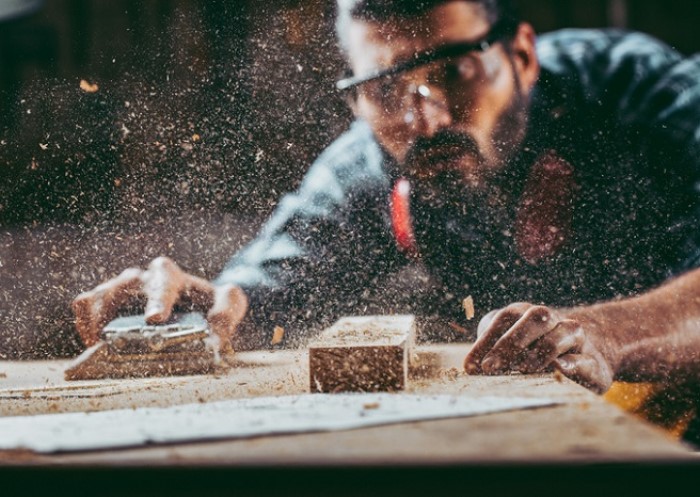Table of contents
Wood is one of the oldest natural building materials and it has been used to construct buildings for thousands of years. There are many reasons for this: the renewable raw material combines many positive properties and wooden buildings can be erected quickly and radiate a homely atmosphere. It is also not without reason that wood has the reputation of being a particularly environmentally friendly building material. In this article, you will find out how sustainable wood as a construction material really is and which properties, advantages and disadvantages it has.
What properties does wood have as a building material?
Due to its excellent structural-physical properties, wood can be used not only in the construction of new housing, but also for re-densification, closing gaps and adding storeys to existing housing. Wood has an inherent strength with an advantageous strength-to-weight ratio. This means that wood is lighter than steel with the same load-bearing capacity and almost as compression-resistant as concrete. Wood also allows a high degree of prefabrication in construction, so that building projects can be implemented effectively and quickly.
No matter how the building material is used, regular maintenance of wood increases its lifespan and durability. It is also relatively easy to work with. Processing is not only possible with expensive carpentry equipment such as a circular table saw or wood router, but simpler woodworking tools such as fret saws, chisels or planes can also be sufficient.
| Advantages of wood as a building material | Disadvantages of wood as a building material |
|---|---|
| • renewable • 100% ecologically degradable • trees convert CO2 into oxygen • quick to process • low dead weight • high compressive and tensile strength • ensures a healthy indoor climate • creates a comfortable living at-mosphere • can regulate moisture • good insulating properties • low thermal conductivity | • tends to form mould (dry pro-cessing is essential) • low storage mass, i.e., susceptible to temperature fluctuations and humidity. • wood is prone to warping • susceptible to damage, e.g., pests • relatively high maintenance costs, as the surface has to be treated regularly. |
Wood-based materials and their properties

In contrast to solid wood, which is a natural and renewable raw material, wood-based materials are manufactured industrially. They consist of shredded and reassembled wood and may contain additional substances such as binders or adhesives. The raw material is shredded into sticks, pellets, chips or wood wool, for example, and then joined together mechanically or with binders. The smaller the processed particles are, the more the positive insulating properties and the surface quality of the material increase, although the strength decreases. However, this can be increased again by adding binders.
Chemical substances are mainly used as binders, for example synthetic resins containing formaldehyde, as well as flame retardants or wood preservatives. If these chemical binders are contained in the wood-based material, it is not sustainable. More environmentally friendly and health-friendly alternatives such as bio-based plastics are currently being developed but are not very widespread yet.
In general, the following types of wood-based materials used for building are distinguished from each other:
Solid wood materials:
- are made from solid wood
- are produced as sticks, boards or panels
Wood chip materials:
- made from solid wood or sawdust in combination with additives or synthetic resin glues
- are pressed under pressure and heat – make up the largest part of wood-based materials
Wood fibre materials:
- are made from sawmill by-products, wood and woody plant fibres (e.g., rapeseed, flax)
- matted by their own binding forces or by the addition of adhesives
Is wood really a sustainable building material?
Trees convert climate-damaging carbon (CO2) into vital oxygen, thereby making an important contribution to delaying climate change. Thus, the cultivation of wood can contribute to climate protection. In addition, wood is 100% biodegradable and a natural, renewable raw material: it can have a positive ecological balance. Nevertheless, as a building material wood cannot automatically be described as climate-neutral or environmentally friendly. Building with wood can actually harm the environment more than it helps to preserve it – depending on where and how the raw material is extracted. Wood is only a sustainable building material if the following conditions are considered when extracting the material:
- if it is produced regionally and there are no long transport routes:
- avoids additional CO2 pollution through transport.
- if the forests from which the wood is harvested are reforested in a sustainable and careful manner:
- i.e., if only indigenous tree species are planted.
- all trees are felled at the same time and the trees have different growth heights – these offer protection against environmental influences and are a basis of life for diverse species.
- the use of pesticides for pest control is avoided.
- if no more wood is felled than can grow again.
Forests are important climate regulators
Forests are complex ecosystems and have the ability to self-regulate – the biodiversity of animals and plants is attuned to each other and is in self-regulating balance. After the oceans, forests exert the most important influence on the climate, as they have a balancing effect on the global oxygen balance and are the habitat of many native species.
In contrast, in non-natural commercial forests, the delicate ecological balance is more or less disturbed, depending on how drastic the human interventions are: monocultures, non-native tree species and intensive management aimed solely at profit can have far-reaching consequences. Not only stem wood, but also residual wood and important nutrients that the ecosystem needs for humus formation are removed from the forest floor: this leads to a nutrient deficiency in regrowing trees. Furthermore, pests can multiply because their natural predators are deprived of their livelihoods by the cultivation of non-native tree species and the simultaneous felling of all trees: if pesticides are used to control pests, they have a damaging effect on the trees, the air and the creatures native to the forest.
When buying wood as a building material, look for certified, sustainable cultivation. The FSC certificate is currently considered the eco-label with the strictest requirements. To be truly sustainable, the FSC certificate should be accompanied by the note that the wood also comes from regional cultivation and that the forests are regularly reforested.
Popular but not sustainable: tropical timber and its alternatives
Almost half of all land creatures worldwide make their home in tropical rainforests. As the result of rigorous logging practices, animals and humans are losing their livelihoods, and more and more species are disappearing permanently from the earth.
In addition, tropical timber is often illegally harvested. The main culprits are large timber companies that often clearcut large areas of forest, even in protected areas, without permission. In doing so, they cut down endangered tree species, avoid paying taxes and customs duties or falsely declare goods in order to conceal the felling of prohibited timber.
When tropical timber is imported as building material, animal and plant pests such as beetles or fungi are often introduced from the tropical regions. They pose a particular threat to native tree species, as they do not belong to the local ecosystem and therefore have no natural enemies. Thus, they spread unhindered and can only be controlled with toxic chemicals. Due to the long transport routes of tropical wood, an enormous amount of CO2 is emitted as well.
If you appreciate the positive properties such as resistance, durability and aesthetics of tropical wood, but want to focus on sustainability, you can use the following domestic types of woods as an alternative construction material:
| Area of application | Tropical wood species | Indigenous wood species |
|---|---|---|
| Carpentry (e.g., windows, doors, furniture) | • Brazilian pine • koto • limba • sipo • teak • kordia • niangon • cerejeira | • oak • ash • spruce • pine • larch • red oak • elm • fir |
| Dyke construction, bank stabilisation, bridges | • basralocus • bangkirai • bilinga • kapur • makkaser | • elm • oak • larch |
| Exterior panelling (e.g., shingles, window frames) | • agba • cedro • makkaser | • larch • thuja • cedar |
| Indoor flooring | • mersawa • ozouga • kokrodua | • beech • oak • ash |
Wood as a building material is currently in short supply

The attractiveness of wood for use as a construction material has been increasing for years. Discussions about sustainable construction and climate protection are making the raw material increasingly interesting for builders, architects and engineers.
The demand for all types of wood for building is increasing not only in the UK, but also internationally. The increasing popularity of timber and hybrid construction methods with wood is only one of the reasons why the market price of the raw material is currently skyrocketing. On the other hand, there is a shortage of raw materials for the following reasons, among others:
- Many countries have had to struggle with large-scale forest fires due to the changing climate, from huge forest fires to forests being decimated by domestic and foreign pests.
- Timber traders export abroad at much higher prices than they would get for their goods in the UK.
- In addition, massive forest damage in the UK is causing large quantities of damaged wood and additionally creating a shortage of raw materials.
Subsidies for wood-processing companies
The current price development and the scarcity of raw material are a cause of concern for many tradespeople and businesses currently do not know how they can fulfil their orders because there is simply a lack of material. For this reason, various funding programmes to support wood processing and manufacturing companies are intended to meet the changed demands on the current raw material base and to strengthen the competitiveness of the companies.
- The federal programme to promote investment in the timber industry is aimed at small, medium-sized and large enterprises alike.
- The Timber in Construction (TiC) Innovation Fund promotes developing innovation in types of wood products in construction and supply chains in an effort to store carbon dioxide in long service products.
- Furthermore, the Forestry Commission provides funding to farmers for managing land to benefit the environment, investing in equipment, infrastructure and technology to increase productivity and other programmes.
FAQ for building with wood
Depending on the type of wood, wood has a high compressive strength with simultaneous elasticity. With the right care, it is very durable. Due to its properties, it can be processed quickly and easily, so that building projects can be implemented in less time than with conventional construction methods. Wood is a renewable, 100% biodegradable raw material, which makes it a particularly environmentally friendly for building purposes.
Building with wood is not automatically sustainable. Only if wood is grown and processed regionally, the forests are regularly and carefully reforested and long transport routes are eliminated, can the raw material be called sustainable.
There are various funding programmes that support wood processing and manufacturing companies in the current climate and promote innovative wooden housing construction projects. Small businesses as well as medium and large enterprises can apply for the funding opportunities.
There are many different certificates that declare wood to be sustainable. The seal with the strictest requirements is the FSC certificate. Make sure that in addition to the FSC certificate, there is a note about regional cultivation and reforestation of the forest.
Image source:
© gettyimages.de– Filmfoto, IPGGutenbergUKLtd, Steve Dunning

